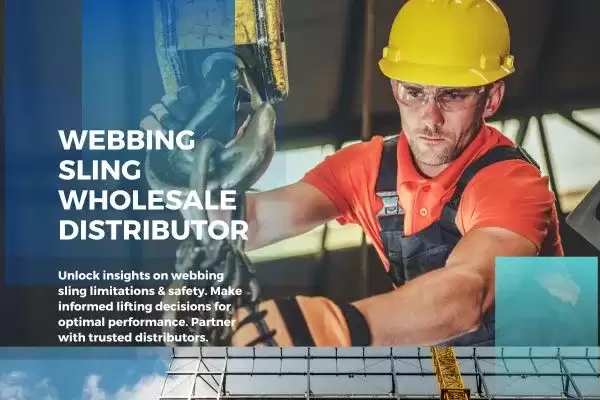100 %

Oct 26,2023
In the dynamic world of material handling, webbing slings have emerged as a versatile and dependable solution for lifting and transporting heavy loads. These flexible and durable tools have revolutionized the way industries operate, enhancing efficiency and safety. However, like any equipment, webbing slings have specific applications and limitations that must be understood to ensure optimal performance and workplace safety. In this article, we delve into the pivotal question: "When should a webbing sling not be used?" Read on to gain valuable insights and make informed decisions for your lifting needs.
Webbing slings, renowned for their strength and adaptability, are made from woven polyester fibers. This construction imbues them with the ability to handle substantial loads while also being lightweight and easy to handle. They are preferred in various industries due to their non-abrasive nature, which helps protect delicate loads from damage during lifting operations.
Before delving into scenarios where webbing slings should be avoided, it's crucial to establish their optimal use cases. Webbing slings are highly effective for tasks involving irregularly shaped or fragile loads. Their flexibility allows them to conform to the contours of the load, evenly distributing the weight and minimizing the risk of damage.
Additionally, webbing slings are particularly useful when lifting loads with polished or sensitive surfaces. Traditional chains or wire ropes might cause abrasions or scratches, but webbing slings provide a gentler and safer lifting solution.
While webbing slings are a reliable tool in many scenarios, there are situations where they should be avoided to ensure both worker safety and load integrity.
Chemical Exposure: Webbing slings are susceptible to degradation when exposed to certain chemicals. Acidic or caustic environments can weaken the fibers over time, reducing the sling's overall strength and compromising safety. In settings where chemical exposure is prevalent, alternatives such as chain slings or wire rope slings might be more appropriate.
High Temperatures: Elevated temperatures can adversely affect the performance of webbing slings. Excessive heat can weaken the fibers and cause them to lose their elasticity, potentially leading to sudden failures during lifting operations. In environments where temperatures regularly exceed the recommended limits of the webbing sling, specialized heat-resistant slings should be considered.
Sharp Edges and Abrasive Surfaces: While webbing slings excel at protecting delicate loads, they are not impervious to damage themselves. Sharp edges or rough surfaces can cut or fray the sling's fibers, significantly reducing its load-bearing capacity. In such scenarios, using slings with protective sleeves or opting for chain slings might be a safer choice.
Extreme Load Conditions: While webbing slings have impressive strength, there are limits to the loads they can safely handle. In cases where loads approach or exceed the sling's working load limit, it's advisable to use a more robust lifting solution. Pushing a webbing sling beyond its rated capacity increases the risk of catastrophic failure.
According to recent industry data, webbing slings account for a significant portion of lifting equipment failures. A substantial percentage of these failures can be attributed to using webbing slings in unsuitable conditions.
The data underscores the critical importance of using lifting equipment in accordance with their intended applications. By making informed decisions and selecting the right equipment for each job, companies can significantly reduce the risk of accidents, downtime, and costly equipment replacements.
To ensure that you have access to top-quality lifting equipment that meets your specific needs, it's vital to collaborate with a reputable webbing sling wholesale distributor. These distributors offer a range of lifting solutions, along with expert advice on selecting the most suitable equipment for various applications.
In conclusion, webbing slings are a versatile and indispensable tool in the world of material handling. Understanding their strengths and limitations is essential for creating a safe and efficient workplace. By avoiding scenarios involving chemical exposure, extreme temperatures, sharp edges, and excessive loads, you can harness the full potential of webbing slings while maintaining a secure lifting environment. Make data-driven decisions, prioritize safety, and partner with a trusted wholesale distributor to elevate your lifting operations to new heights.